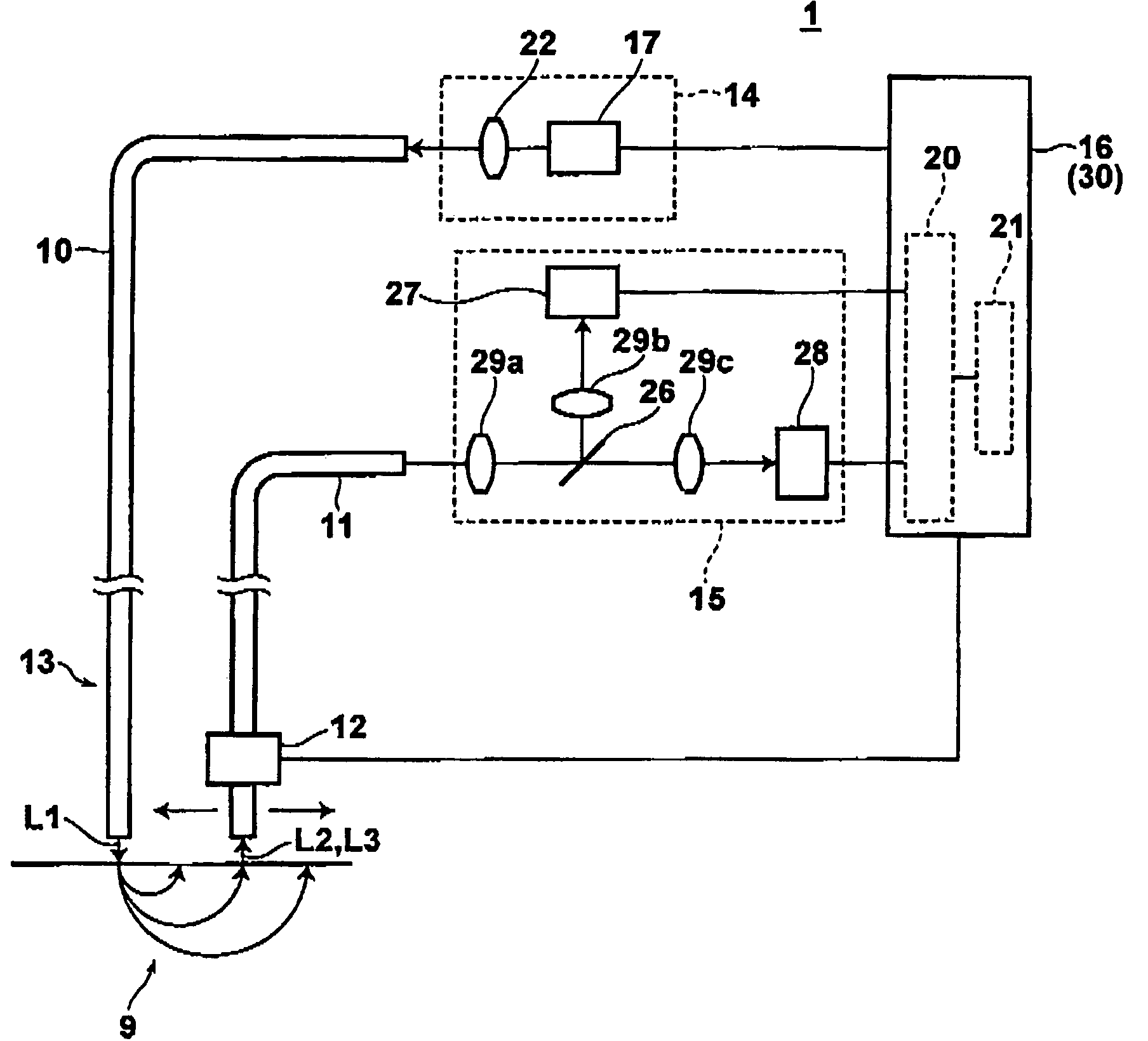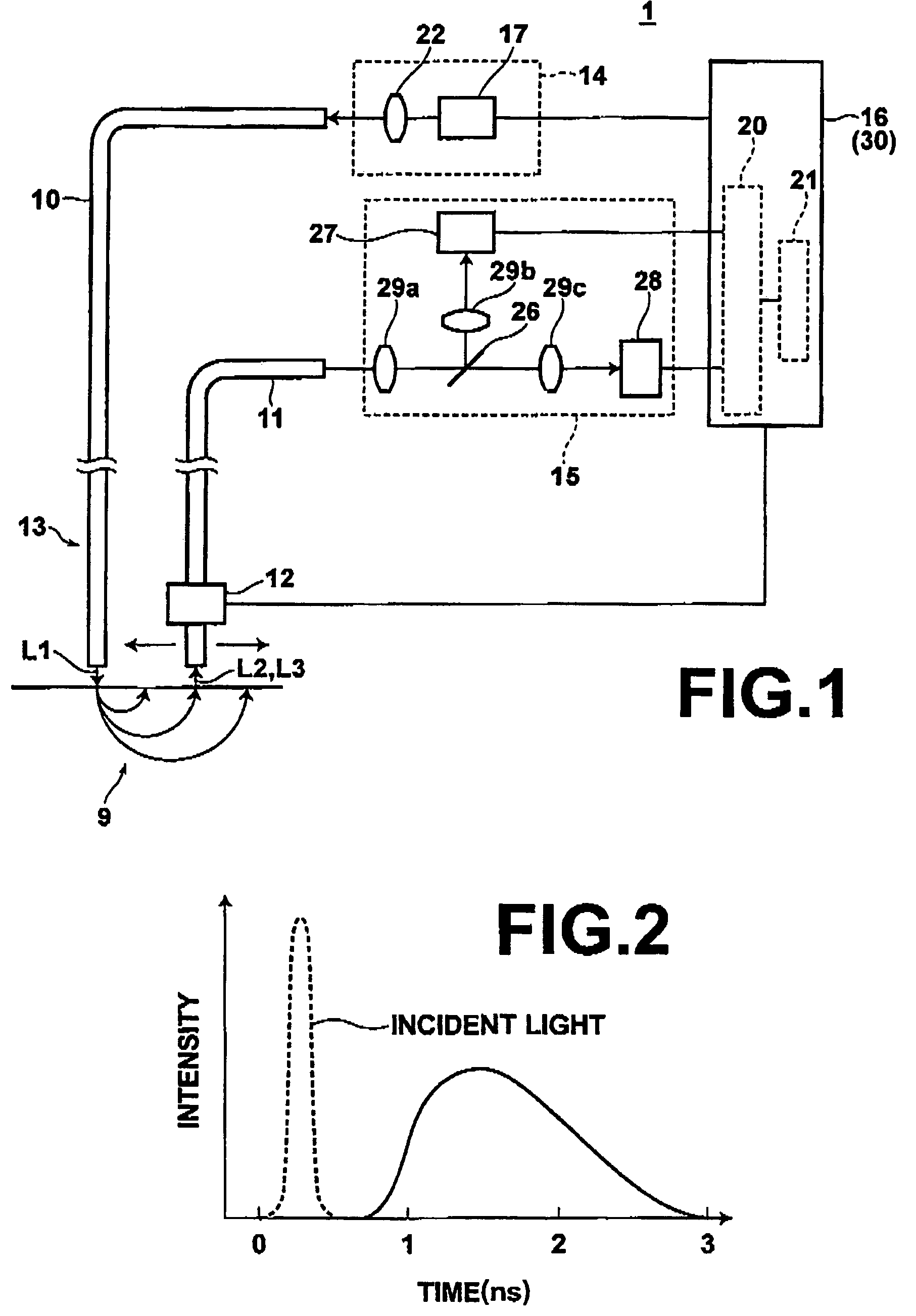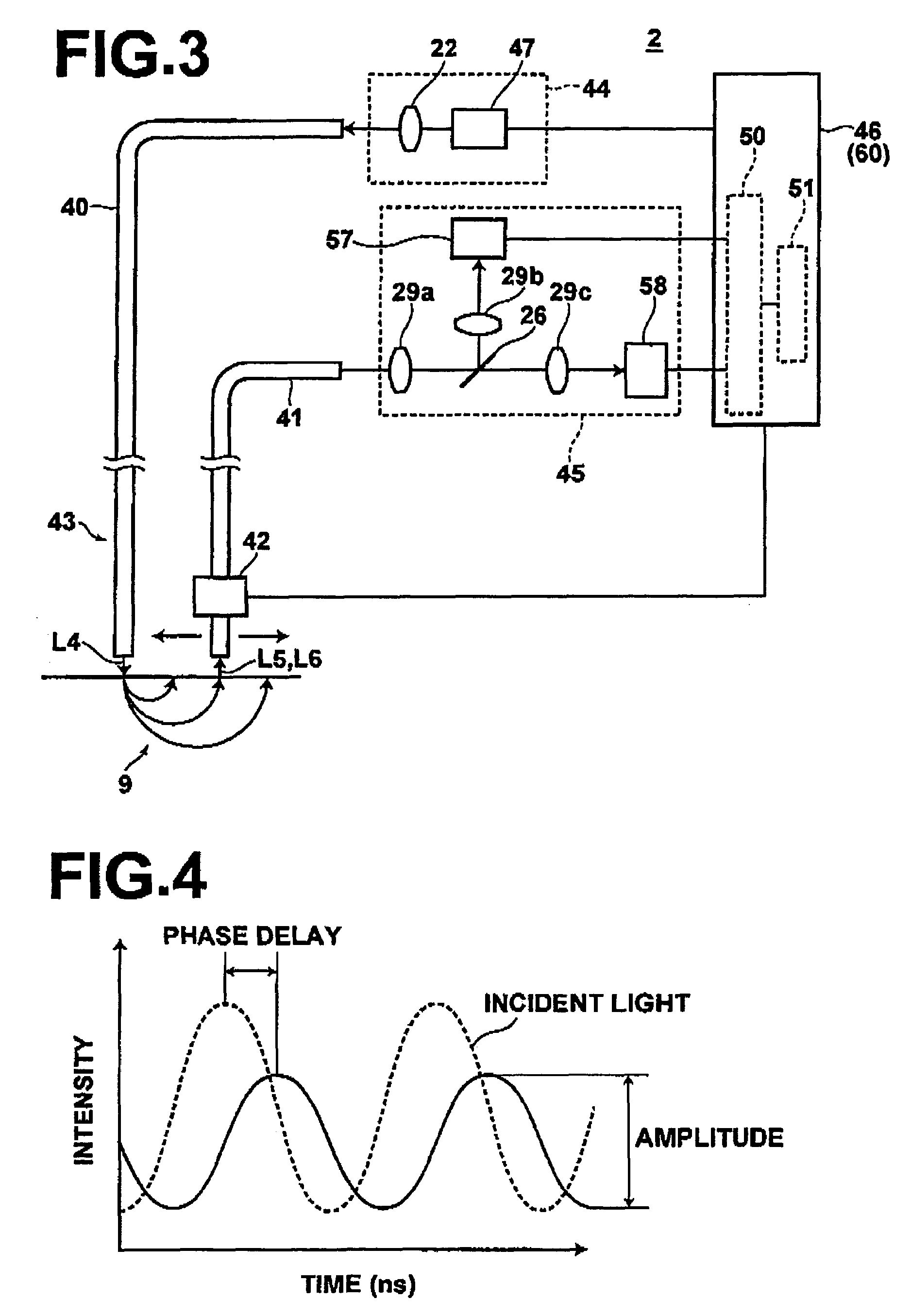Specimen analysis system obtaining characteristic of specimen by diffusion approximation
a technology of diffusion approximation and specimen, applied in the field of specimen analysis system, can solve the problems of low intensity of detected light, inability to ensure sufficient high signal-to-noise ratio, low reliability of analysis performed by conventional systems using time-resolved spectroscopy or frequency-domain spectroscopy, etc., to achieve high signal-to-noise ratio and improve analysis reliability
- Summary
- Abstract
- Description
- Claims
- Application Information
AI Technical Summary
Benefits of technology
Problems solved by technology
Method used
Image
Examples
first embodiment
[0029]A specimen analysis system according to the first embodiment of the present invention is explained below with reference to FIG. 1, which schematically shows the construction of the specimen analysis system according to the first embodiment.
[0030]The specimen analysis system 1 according to the first embodiment injects pulsed incident light L1 through an injection optical fiber into an examined portion 9 of a subject, acquires information carried by light which exits from the examined portion 9 by scanning the examined portion 9 with a single measurement optical fiber, and measures a distribution of a fluorescent agent in the examined portion 9 by using the time-resolved spectroscopy, where the subject is dosed in advance with the fluorescent agent, the fluorescent agent has an affinity for a tumor, and the incident light L1 has a wavelength in the range which enables excitation of the fluorescent agent. In this example, the fluorescent agent emits fluorescence having the wavele...
second embodiment
[0057]A specimen analysis system according to the second embodiment of the present invention is explained below with reference to FIG. 3, which schematically shows the construction of the specimen analysis system according to the second embodiment.
[0058]The specimen analysis system 2 according to the second embodiment injects incident light L4 through an injection optical fiber into an examined portion 9 of a subject, acquires information carried by light which exits from the examined portion 9 by scanning the examined portion 9 with a single measurement optical fiber, and measures a distribution of a fluorescent agent in the examined portion 9 by using the frequency-domain spectroscopy, where the subject is dosed in advance with the fluorescent agent, the fluorescent agent has an affinity for a tumor, and the incident light L4 has a wavelength in the range which enables excitation of the fluorescent agent, and is modulated at a high frequency.
[0059]As illustrated in FIG. 3, the spe...
PUM
| Property | Measurement | Unit |
|---|---|---|
| wavelength | aaaaa | aaaaa |
| wavelength | aaaaa | aaaaa |
| cladding thickness | aaaaa | aaaaa |
Abstract
Description
Claims
Application Information
 Login to View More
Login to View More - R&D
- Intellectual Property
- Life Sciences
- Materials
- Tech Scout
- Unparalleled Data Quality
- Higher Quality Content
- 60% Fewer Hallucinations
Browse by: Latest US Patents, China's latest patents, Technical Efficacy Thesaurus, Application Domain, Technology Topic, Popular Technical Reports.
© 2025 PatSnap. All rights reserved.Legal|Privacy policy|Modern Slavery Act Transparency Statement|Sitemap|About US| Contact US: help@patsnap.com



